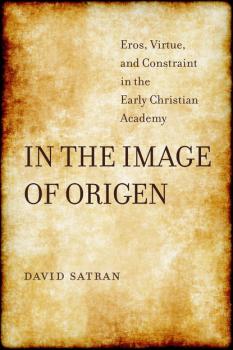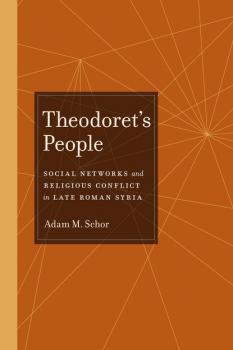ТОП просматриваемых книг сайта:















Transformation of the Classical Heritage
Скачать книги из серии Transformation of the Classical HeritageАннотация
Andrew N. Palmer’s vivid translation of the Syriac Life of Barsauma opens a fascinating window onto the ancient Middle East, seen through the life and actions of one of its most dramatic and ambiguous characters: the monk Barsauma, ascetic hero to some, religious terrorist to others. The Life takes us into the eye of the storm that raged around Christian attempts to define the nature of Christ in the great Council of Chalcedon, the effect of which was to split the growing Church irrevocably, with the Oriental Orthodox on one side and Greek Orthodox and Roman Catholic on the other. Previously known only in extracts, this ancient text is now finally brought to readers in its entirety, casting dramatic new light on the relations among pagans, Jews, and Christians in the Holy Land and on the role of religious violence, real or imagined, in the mental world of a Middle East as shot through with conflict as it is today.
Информация о книге
Автор произведения Группа авторов
Аннотация
The Final Pagan Generation recounts the fascinating story of the lives and fortunes of the last Romans born before the Emperor Constantine converted to Christianity. Edward J. Watts traces their experiences of living through the fourth century’s dramatic religious and political changes, when heated confrontations saw the Christian establishment legislate against pagan practices as mobs attacked pagan holy sites and temples. The emperors who issued these laws, the imperial officials charged with implementing them, and the Christian perpetrators of religious violence were almost exclusively young men whose attitudes and actions contrasted markedly with those of the earlier generation, who shared neither their juniors’ interest in creating sharply defined religious identities nor their propensity for violent conflict. Watts examines why the «final pagan generation»—born to the old ways and the old world in which it seemed to everyone that religious practices would continue as they had for the past two thousand years—proved both unable to anticipate the changes that imperially sponsored Christianity produced and unwilling to resist them. A compelling and provocative read, suitable for the general reader as well as students and scholars of the ancient world.
Аннотация
Being Christian in Vandal Africa investigates conflicts over Christian orthodoxy in the Vandal kingdom, the successor to Roman rule in North Africa, ca. 439 to 533 c.e. Exploiting neglected texts, author Robin Whelan exposes a sophisticated culture of disputation between Nicene (“Catholic”) and Homoian (“Arian”) Christians and explores their rival claims to political and religious legitimacy. These contests—sometimes violent—are key to understanding the wider and much-debated issues of identity and state formation in the post-imperial West.
Аннотация
This groundbreaking study brings into dialogue for the first time the writings of Julian, the last non-Christian Roman Emperor, and his most outspoken critic, Bishop Gregory of Nazianzus, a central figure of Christianity. Susanna Elm compares these two men not to draw out the obvious contrast between the Church and the Emperor’s neo-Paganism, but rather to find their common intellectual and social grounding. Her insightful analysis, supplemented by her magisterial command of sources, demonstrates the ways in which both men were part of the same dialectical whole. Elm recasts both Julian and Gregory as men entirely of their times, showing how the Roman Empire in fact provided Christianity with the ideological and social matrix without which its longevity and dynamism would have been inconceivable.
Аннотация
The most prominent Christian theologian and exegete of the third century, Origen was also an influential teacher. In the famed <I>Thanksgiving Address</I>, one of his students—traditionally thought to be Gregory Thaumaturgus, later bishop of Cappadocia—delivered an emotionally charged account of his tutelage under Origen in Roman Palestine. Although it is one of the few personal narratives by a Christian author to have survived from the period, the <I>Address</I> is more often cited than read closely. But as David Satran demonstrates, this short work has much to teach us today. At its center stands the question of moral formation, anchored by the image of Origen himself, and Satran’s careful analysis of the text sheds new light on higher education in the early church as well as the intimate relationship between master and disciple. 
Аннотация
Christian communities flourished during late antiquity in a Zoroastrian political system, known as the Iranian Empire, that integrated culturally and geographically disparate territories from Arabia to Afghanistan into its institutions and networks. Whereas previous studies have regarded Christians as marginal, insular, and often persecuted participants in this empire, Richard Payne demonstrates their integration into elite networks, adoption of Iranian political practices and imaginaries, and participation in imperial institutions.<BR /><BR />  The rise of Christianity in Iran depended on the Zoroastrian theory and practice of hierarchical, differentiated inclusion, according to which Christians, Jews, and others occupied legitimate places in Iranian political culture in positions subordinate to the imperial religion. Christians, for their part, positioned themselves in a political culture not of their own making, with recourse to their own ideological and institutional resources, ranging from the writing of saints’ lives to the judicial arbitration of bishops. In placing the social history of East Syrian Christians at the center of the Iranian imperial story, <I>A State of Mixture</I> helps explain the endurance of a culturally diverse empire across four centuries.<BR />  
Missionary Stories and the Formation of the Syriac Churches - Jeanne-Nicole Mellon Saint-Laurent
Transformation of the Classical HeritageАннотация
Missionary Stories and the Formation of the Syriac Churches analyzes the hagiographic traditions of seven missionary saints in the Syriac heritage during late antiquity: Thomas, Addai, Mari, John of Ephesus, Simeon of Beth Arsham, Jacob Baradaeus, and Ahudemmeh. Jeanne-Nicole Mellon Saint-Laurent studies a body of legends about the missionaries’ voyages in the Syrian Orient to illustrate their shared symbols and motifs. Revealing how these texts encapsulated the concerns of the communities that produced them, she draws attention to the role of hagiography as a malleable genre that was well-suited for the idealized presentation of the beginnings of Christian communities. Hagiographers, through their reworking of missionary themes, asserted autonomy, orthodoxy, and apostolicity for their individual civic and monastic communities, positioning themselves in relationship to the rulers of their empires and to competing forms of Christianity. Saint-Laurent argues that missionary hagiography is an important and neglected source for understanding the development of the East and West Syriac ecclesiastical bodies: the Syrian Orthodox Church and the Church of the East. Given that many of these Syriac-speaking churches remain today in the Middle East and India, with diaspora communities in Europe and North America, this work opens the door for further study of the role of saints and stories as symbolic links between ancient and modern traditions.
Аннотация
Mirage of the Saracen analyzes the growth of monasticism and Christian settlements in the Sinai Peninsula through the early seventh century C.E. Walter D. Ward examines the ways in which Christian monks justified occupying the Sinai through creating associations between Biblical narratives and Sinai sites while assigning uncivilized, negative, and oppositional traits to the indigenous nomadic population, whom the Christians pejoratively called «Saracens.» By writing edifying tales of hostile nomads and the ensuing martyrdom of the monks, Christians not only reinforced their claims to the spiritual benefits of asceticism but also provoked the Roman authorities to enhance defense of pilgrimage routes to the Sinai. When Muslim armies later began conquering the Middle East, Christians also labeled these new conquerors as Saracens, connecting Muslims to these pre-Islamic representations. This timely and relevant work builds a historical account of interreligious encounters in the ancient world, showing the Sinai as a crucible for forging long-lasting images of both Christians and Muslims, some of which endure today.
Информация о книге
Автор произведения Walter D. Ward
Аннотация
Theodoret’s People sheds new light on religious clashes of the mid-fifth century regarding the nature (or natures) of Christ. Adam M. Schor focuses on Theodoret, bishop of Cyrrhus, his Syrian allies, and his opponents, led by Alexandrian bishops Cyril and Dioscorus. Although both sets of clerics adhered to the Nicene creed, their contrasting theological statements led to hostilities, violence, and the permanent fracturing of the Christian community. Schor closely examines council transcripts, correspondence, and other records of communication. Using social network theory, he argues that Theodoret’s doctrinal coalition was actually a meaningful community, bound by symbolic words and traditions, riven with internal rivalries, and embedded in a wider world of elite friendship and patronage.
Аннотация
This book explores the role of bodily, sensory experience in early Christianity (first – seventh centuries AD) by focusing on the importance of smell in ancient Mediterranean culture. Following its legalization in the fourth century Roman Empire, Christianity cultivated a dramatically flourishing devotional piety, in which the bodily senses were utilized as crucial instruments of human-divine interaction. Rich olfactory practices developed as part of this shift, with lavish uses of incense, holy oils, and other sacred scents. At the same time, Christians showed profound interest in what smells could mean. How could the experience of smell be construed in revelatory terms? What specifically could it convey? How and what could be known through smell? <i>Scenting Salvation </i>argues that ancient Christians used olfactory experience for purposes of a distinctive religious epistemology: formulating knowledge of the divine in order to yield, in turn, a particular human identity. <br /><br /> Using a wide array of Pagan, Jewish, and Christian sources, Susan Ashbrook Harvey examines the ancient understanding of smell through religious rituals, liturgical practices, mystagogical commentaries, literary imagery, homiletic conventions; scientific, medical, and cosmological models; ascetic disciplines, theological discourse, and eschatological expectations. In the process, she argues for a richer appreciation of ancient notions of embodiment, and of the roles the body might serve in religion.










